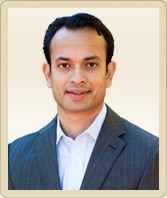Hernia is an opening formed by the lining of the abdominal cavity. Abdominal wall hernia occurs when the contents of the intestine bulges out of the abdominal wall. Hernias are developed at birth (congenital) or may appear later (acquired).
Hernias may be present at birth and occurs when the lining around the abdominal organs, fails to close before birth. Hernia may also result if the connective tissue degenerates in the abdominal wall due to which, pressure builds up in the abdominal wall leading to a bulge in the abdomen. Some of the other factors that worsen hernia are chronic cough, obesity, constipation, pregnancy, poor nutrition, smoking and stretching or straining abdominal muscles while lifting heavy objects.
Hernia Types
There are different types of hernias based on their location. The most common types are listed below.
- Inguinal Hernia
- Femoral Hernia
- Hiatus Hernia
- Incisional Hernia
- Umbilical Hernia
- Epigastric hernia
- Spigelian hernia
- Obturator hernia
Symptoms
Some of the commonly observed symptoms include abdominal pain, bulge in the abdominal area, severe groin pain which increases on coughing or lifting heavy things, burning, gurgling sensation, nausea and vomiting.
Your physician can confirm the presence of hernia by performing physical examination. The size of hernia increases on coughing, bending, lifting, or straining. Rarely ultrasound may be needed to look for hernia.
Treatment
Surgery is the only treatment and is usually performed for hernias that enlarge in size due to increased intra-abdominal pressure causing intestinal obstruction and restricted blood supply which may lead to death of bowel tissues.
A hernia repair is generally performed by Dr Das as keyhole or laparoscopic surgery. Laparoscopic hernia surgery is a surgical procedure in which a laparoscope (telescope) is inserted into the abdomen through a small incision. The laparoscope is a small fiber-optic viewing instrument made up of a tiny lens, light source and video camera.
This surgery is performed under general anesthesia and several small incisions are made around the abdomen. Through one of the incision, a laparoscope a small, fiber-optic tube with a tiny camera is inserted. Through the other incisions, surgical instruments are inserted and hernioplasty and herniorrhaphy is performed.
Carbon dioxide (CO2) is put into the abdomen through a special needle that is inserted just below the navel. This gas helps to separate the organs inside the abdominal cavity, making it easier for the physician to see the reproductive organs during laparoscopy. The gas is evacuated at the end of the procedure.
As common with other surgeries, hernia surgery is also associated with certain complications such as local discomfort and stiffness, infection, damage to nerves and blood vessels, bruising, blood clots, wound irritation and urinary retention.

